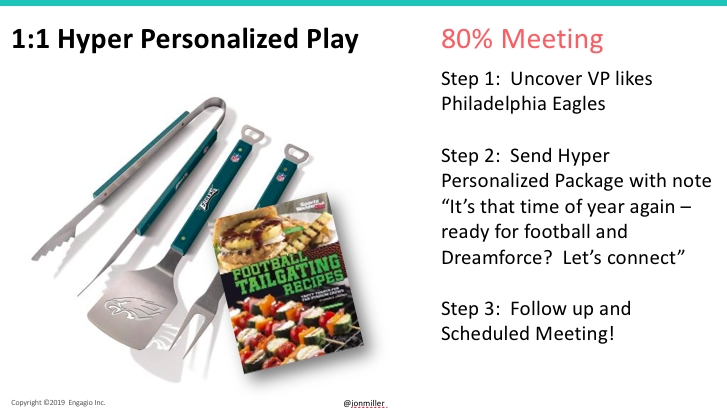At Demand Gen Report, as well as at our sister publication ABM In Action, we have made it our mission to ensure that we’re providing the latest trends and best practices in the growing realm of account-based strategy. But during a recent webcast we produced with our friends at Engagio, I realized that there is always something to learn when it comes to one of the hottest trends in B2B business today.
For those of you who may have missed the session, Engagio’s Co-Founder and CEO Jon Miller shared a plethora of great insights on how to set a clear strategy for account-based marketing initiatives within an organization. Here are five of the most eye-opening takeaways from the presentation:
1) Marketing-Driven, Sales-Owned

Historically, one of the biggest challenges of ABM was the premise of marketing selecting the accounts sales teams should be going after. However, rather than marketing trying to win that argument every time, Miller suggests taking a “marketing-driven, sales owned” approach to lead sales teams to target the right accounts based on accurate insights.
“I think it is essential that sales own the task of selecting the accounts,” said Miller. “Without it, you run the risk of running some great account-based marketing plays, then sales not caring. The whole idea is that they are picking the accounts, and marketing are collectively going to go after them with their support. But marketing can guide the selection process for sales by bringing data — account fit and engagement data — to the table.”
2) ABM Standups
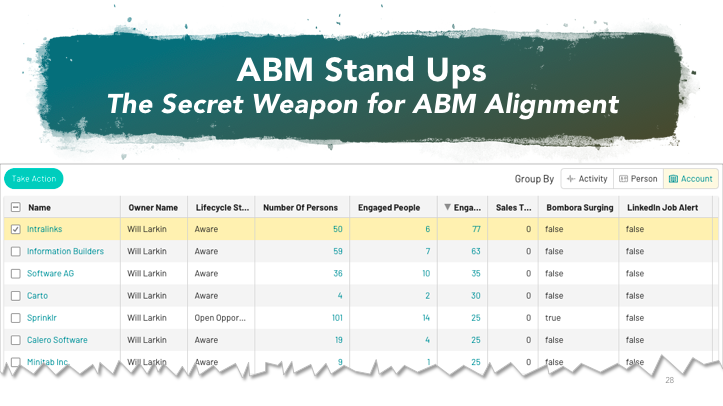
To continue promoting better alignment between departments, it’s vital to have regular communication with reps about the accounts that matter to them. Miller suggests scheduling regular “ABM standups” with individual reps to talk specifics about their target accounts from both marketing and sales’ perspectives.
“This is the single most powerful thing to really help sales and marketing get on the same page and work more effectively together for better ABM,” said Miller. “It’s about taking the sales person, ABM marketer and perhaps the SDR, then they meet every two weeks to talk about what’s going on at that rep’s target accounts. You want this to be focused on just that rep’s target accounts. Marketing is sharing key insights, and sales is bringing info that they know based on recent engagement. [They] can then decide what actions we’ll take based on that insights.”
3) Hyper-Personalized Plays
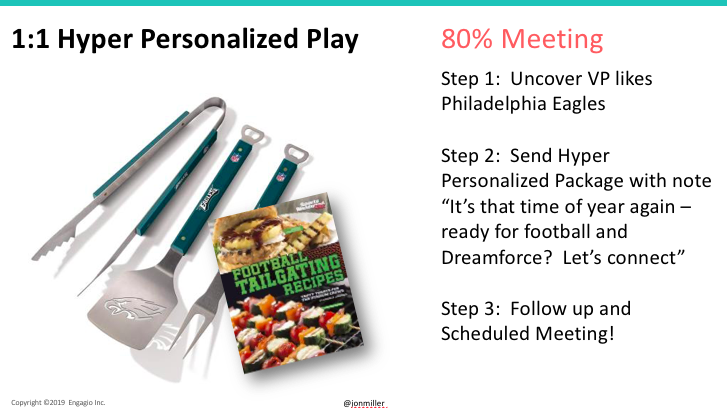
Leveraging the abundance of data at marketing and sales’ disposal is vital to formulating plays to effectively engage top-tier accounts. However, to stand out among the crowd, this insight should help develop deep, hyper-personalized plays that speak to accounts on a personal and professional level.
“For example, we found one account with a VP that likes the Philadelphia Eagles,” said Miller. “We created a direct mail play where we added personalized tailgating accessories with a note aligned to talking to them about account-based marketing. I want to point out that this stood out in the crowded noise in the market because direct mail is unique, and it tied into their personal interests. In a perfect world, you’re bringing commercial insight and something that stands out. When we run plays like that, we get an 80% meeting rate.”
4) ABM Automation
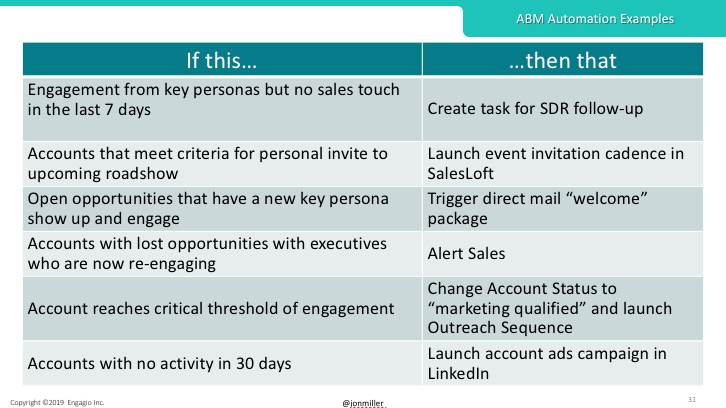
While hyper-personalization is a key differentiator, there is still a variety of opportunities to automate tactics based on the deep insight garnered from account engagement. Miller noted several examples of “if this, then that” moments where account activity and behavior can lead to targeted marketing and sales interactions.
“Let’s say there is an account we thought was a closed loss, but now has key executives that are reengaging,” said Miller. “That’s a great opportunity to alert sales. Maybe for accounts with no activity, it would be good to launch account ads via LinkedIn. The key idea is that marketing and sales are sitting down, looking at the accounts information and deciding what they will can do now and or automate based on that information.”
5) ABM Metrics = Coverage & Engagement
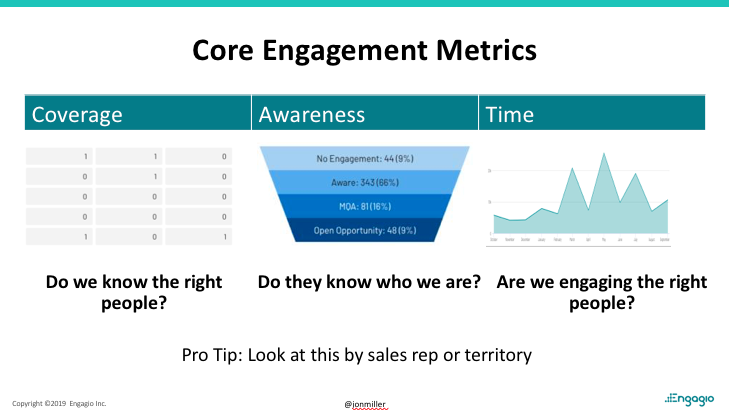
Based on past coverage of practitioner use cases, it’s clear that there is a contrast between important demand gen metrics and ABM metrics. The question is where should marketing teams focus their measurement efforts? Miller highlighted how account coverage and engagement are two important metrics in ABM for better understanding where accounts stand in the buying funnel.
“Most demand gen metrics are lead-based,” said Miller. “But at the end of the month, sales teams don’t talk about how many leads they’ve closed, but how many accounts they’ve closed. So, a big part of ABM is changing marketing’s metrics to be more aligned with sales. Another key difference is that metrics should be more focused around quality versus quantity. In ABM, you don’t care how many people show up at an event, it’s whether the right people showed up at the event. At Engagio, we look at which accounts have no engagement, which have little engagement, which are MQAs and how they are moving from stage to stage.”
This was only a glimpse of some of the key takeaways from the recent session with Engagio’s Jon Miller. Click here to check out the full session, available on demand!

